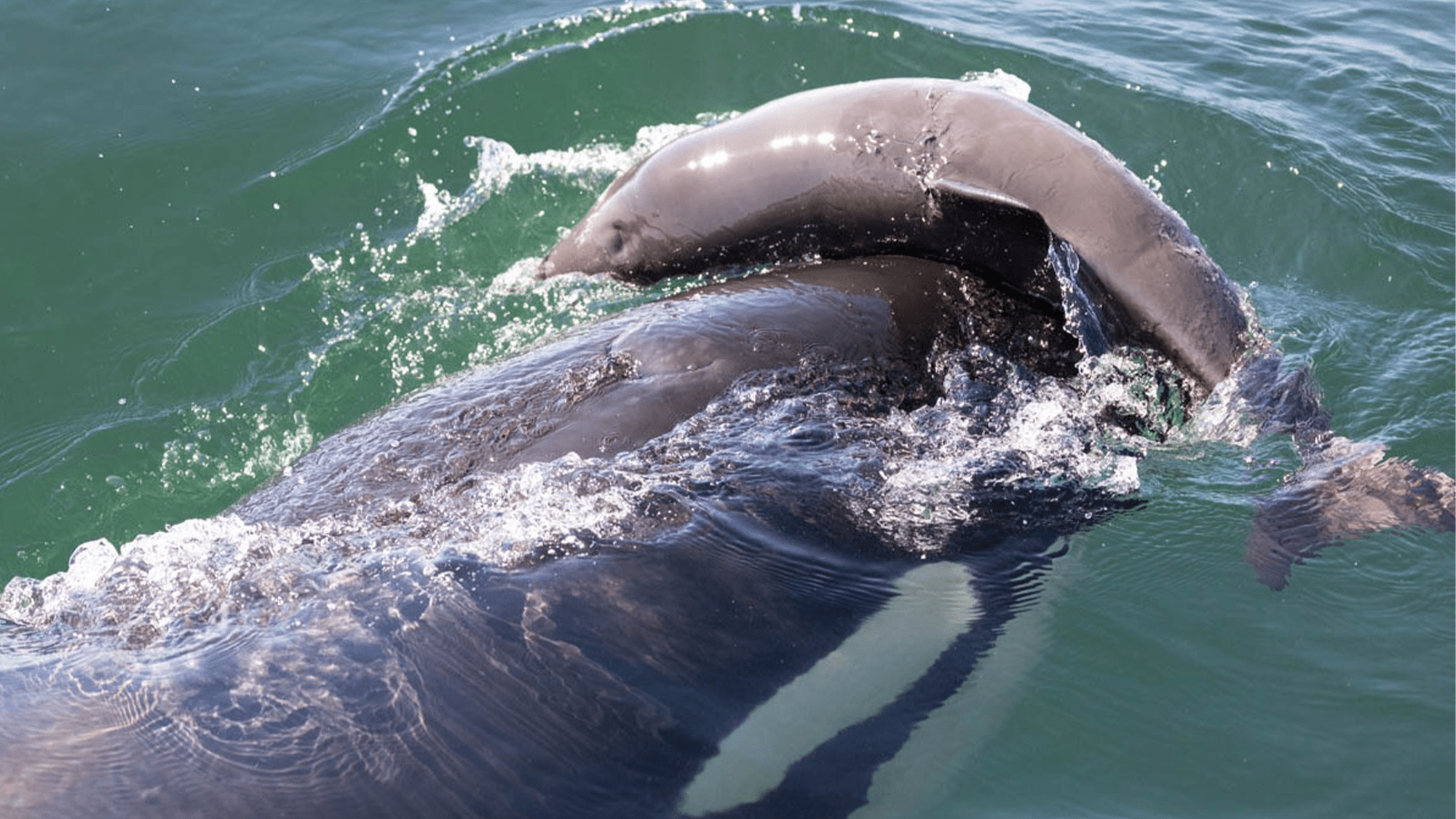

Despite only eating fish, the Southern Resident orcas of the Pacific Northwest’s Salish Sea are known for a perplexing behavior. They harass and even kill porpoises without eating them and scientists are not really sure why. A study published September 28 in the journal Marine Mammal Science looked at over 60 years of data to try and solve this ongoing mystery.
[Related: Raising male offspring comes at a high price for orca mothers.]
While their relatives called transient killer whales eat other organisms including squid, shark, and porpoises, the Southern Resident orcas exclusively eat fish, particularly Chinook salmon. The strange porpoise-harassing behavior was first scientifically documented in 1962. The new study analyzed 78 documented incidents and found three plausible explanations.
Orcas at play
The behavior may be a form of social play for orcas. Like many intelligent species including dogs, elephants, and kangaroos, these whales sometimes engage in playful activities as a way to bond, communicate, or just simply enjoy themselves. Going after porpoises might benefit their group coordination and teamwork.
This theory may be reminiscent of the orcas who became famous for sinking boats in Spain and Portugal. While the Southern Resident killer whales and the whales from the Iberian Peninsula are two different populations with distinct cultures, their affinity for play could be something both populations share, according to the authors of the study.
Hunting practice
Going after a larger animal like porpoises might help these whales hone their critical salmon-hunting skills. They may view porpoises as moving targets to practice their hunting techniques, even if a meal is not the end result.
Mismothering behavior
The orcas may be attempting to provide care for porpoises that they perceive as either sick or weak. This could be a behavioral manifestation of their natural inclination to help others within their pod. Female orcas have been observed carrying their deceased calves and have been observed carrying porpoises in a similar manner.
Scientists also call mismothering behavior displaced epimeletic behavior. It could be due to their limited opportunities to care for their young, according to study co-author and science and research director at Wild Orca Deborah Giles.
“Our research has shown that due to malnutrition, nearly 70 percent of Southern Resident killer whale pregnancies have resulted in miscarriages or calves that died right away after birth,” Giles said in a statement.
An endangered group
Southern Resident killer whales are considered an endangered population. Currently, only 75 individuals exist and their survival is essentially tied to Chinook salmon. A 2022 study found that these orcas have been in a food deficit for over 40 years and another study found that the older and fatter fish are also becoming more scarce in several populations.
“I am frequently asked, why don’t the Southern Residents just eat seals or porpoises instead?” said Giles. “It’s because fish-eating killer whales have a completely different ecology and culture from orcas that eat marine mammals—even though the two populations live in the same waters. So we must conclude that their interactions with porpoises serve a different purpose, but this purpose has only been speculation until now.”
Even with these three theories for the behavior, the team acknowledges that the exact reason behind porpoise harassment may always remain a mystery. What is clear is that porpoises are not a part of the Southern Resident killer whale diet, so eating them is highly unlikely.
“Killer whales are incredibly complex and intelligent animals. We found that porpoise-harassing behavior has been passed on through generations and across social groupings. It’s an amazing example of killer whale culture,” Sarah Teman, a study co-author and marine mammal biologist with the University of California, Davis School of Veterinary Medicine’s SeaDoc Society, said in a statement. “Still, we don’t expect the Southern Resident killer whales to start eating porpoises. The culture of eating salmon is deeply ingrained in Southern Resident society. These whales need healthy salmon populations to survive.”
However, this research does underscore the importance of salmon conservation in the Salish Sea and the Southern Resident’s entire range. They generally stay near southern Vancouver Island and Washington State, but their range can extend as far as the central California coast and southeastern Alaska. Maintaining an adequate salmon supply will be vital to their survival and well-being of the Salish Sea ecosystem as a whole.
